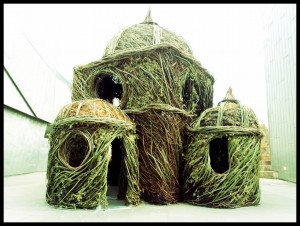We are playing with the future all the time. We’re often told to invest carefully in it. We feel compelled, obliged, and sometimes pressured into doing far more to secure our future than we should. Take the current debate about the National Broadband Network infrastructure. There’s enormous pressure to invest in the best possible cable network for Australia, so that access to decent network speeds are on par with other developed and technological countries. For many in Australia it’s having at least any access full stop. It should be a no-brainer. Next take the debate about investing in education, much of it driven by findings and recommendations of the Gonski Review. Again there’s masses of pressure and energy around making sure all of the young citizens of Australia have a better, fairer, and richer education. Do you reckon it’s that hard to make a call on it? Stemming from these rather frustrated thoughts was the most selfish problem – trying to work out whether to renovate our existing home or knock it all down and rebuild.
At every level of our lives we are often making crucial decisions – ones that affect our future and the future of others. It doesn’t matter whether you’re trying to improve your living conditions or helping millions of people have better access to quality education. Complexity and limitations will blur, cloud, trick, and frustrate us at every stage. Which makes you less surprised to see people revel in taking risks. We marvel at people that can base jump off the Marina Bay Sands in Singapore, shake our heads at stock brokers who earn and lose millions of dollars, and gape at entrepreneurs who make their projects soar.
I’ve often become really worked up when it comes to people taking risks. In particular within workplaces who desperately want ‘innovation’, but are so anxious and insular that ideas can’t flourish. Innovation is inseparable from risk. It’s doesn’t matter whether you’re a base jumper, a stock broker, or an entrepreneur. Or even if you’re a technician improving networks, a teacher working with students, and a home owner looking to build. If we really want to change and create a better future, then we’re going to have to start taking some risks, and quit the blocking, doubting, and apprehension of ideas, which often delays them long enough to lose their momentum.
We all know the story of the three little pigs. The houses of sticks, timber, and stone. The ferocity and unimaginable force with which the wolf could blow down ideas with (hot) air. We know why we’re told this story: don’t jeopardise the future by building the present on poor foundations because we didn’t want to invest the time. But how would the story have changed if the little pig who built his house of sticks, had been given a better education in constructing his house? Good experiences in understanding the materials that he was working with, and how building something pretty solid (and maybe even creative) with them was entirely possible. Sure, the wolf couldn’t blow down the house made of stone, but just because the home has more weight doesn’t mean it shouldn’t also have some faults.
Maybe we’re all trying to build houses made of stone, when we should consider making it out of sticks – and see how clever and quickly our ideas can take shape. There will be a lot of people who might shoot this approach down; and if you’re building a national broadband network or correcting the inequity in education, then the scale and consequences become even more risky. But when I think about all the decisions I’m grappling with around renovating or rebuilding my home, scale and consequences are just as prevalent. Which direction allows innovation to flourish? Now there’s a question.
